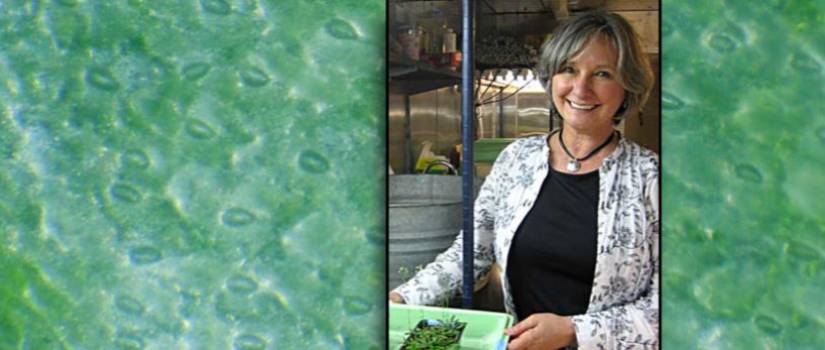Biochemists engineer plants to destroy worms that munch the roots of food crops. They design others to resist the onset of drought and to increase yield.
What if they could engineer a plant to make tiny botanical structures that could attach themselves to and suppress cancerous tumors?
It’s not as sci-fi as you might think. Just ask Vicki Vance, a University of South Carolina biochemist who recently published her team’s work into just such a botanical device: a “microRNA.”
A microRNA– short for “micro ribonucleic acid” – is a cellular fragment of ribonucleic acid, a substance that controls an organism’s every physiological process. Ribonucleic acid exists in all living cells, carrying instructions from an organism’s DNA, telling the organism, as Vance explains, “what genes are turned off or on. Every organism makes these, and they target different genes.”
Vance’s research has shown that biochemists can engineer a plant to destroy the RNA associated with tumor growth, a sort of “kill the messenger” approach.
“We have the patent for making RNA’s in plants,” Vance says. “Our idea was that we would engineer the plant to make tumor-suppressor RNA’s.”
When disease plagues an organism, RNA’s are out of balance. That’s where microRNA’s come in: “There’s a huge therapeutic potential for these . . . if you can just replace” the necessary RNA’s.
The hitch until now has been getting the needed RNA’s back into the body. Injection doesn’t work – the RNA’s degrade before they can do their work.
But about two years ago, a group of researchers in China said they had found that when animals ate certain plants, the animals’ genes would take up the plant’s microRNA’s. As they were taken up, they were secreted into the blood. And, of course, blood “feeds” everything it encounters, including tumors.
Using plants as “a little bio factory” and naturally mutated mice as consumers of the engineered plants, Vance and her team have observed what she calls a dramatic tumor shrinkage among mice who have consumed a “suppressant cocktail” of three microRNA’s over 28 days.
Vance says the therapy would be an inexpensive alternative to chemotherapy, which methodically kills both good and bad cells in order to suppress cancer. Too, the therapy could be used across cancers – unlike chemo, which is specifically tailored for each type of cancer.
“This has huge potential,” Vance says. “Imagine not having to go through that horrible, toxic chemotherapy – you just eat something.”
Plus, “it has huge potential for all sorts of diseases,” including neurological disorders.
The process is controversial – a few university and corporate laboratories claim Vance’s process doesn’t work. Others, though, have replicated the process. And Vance has received money from both the National Institutes of Health and USC’s Center for Colon Cancer Research to continue her work.
Why are you at USC?
Vance came to USC as a faculty wife with two years of postdoctoral work to complete.
She achieved tenure in 1989 and remains because she’s “a little bit insane for the research” she performs with graduate student John MacArthur and research associate professor Gail Pruss.
Why do you teach?
Each semester, Vance teaches one section of Biology 101, comprising about 120 students. Despite working every day with graduate students and other research specialists whose lab skills are advanced, Vance chooses to teach the introductory level.
“I like teaching at that low level,” she says. “It’s a lot of work, but I enjoy it.”
She has a short story to illustrate every lesson and lab project, and the students respond. Postings on Rate My Professor variously label her “adorable” and “sweet, funny and helpful.” Others recommend her as the best at teaching Bio 101.
“I’m excited about biology, and I convey that,” Vance says.
Often, 101 students become so excited they want to participate in laboratory research, something for which they are not yet prepared.
“Can’t I just be here?” she says they ask. “Can’t I just stand around? Can’t I just watch?”
Having younger students observe “kind of buzzes up the lab,” Vance says. “You have to be explaining things to them all the time. Especially for the grad students, that’s a really good thing.”
